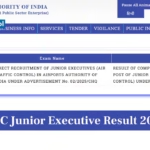Addis Ababa, the capital of Ethiopia and the diplomatic capital of Africa, is undergoing a profound transformation. Once known primarily for its historic roots and political relevance, the city in 2025 has evolved into a symbol of urban revival, development, and aspiration. From the expansion of infrastructure to cultural renaissance, Addis Ababa is rapidly shaping its future.
🏗️ Urban Transformation: Building the New Addis
In recent years, Addis Ababa has been the epicenter of Ethiopia’s most ambitious urban renewal efforts. The Corridor Development Project, launched by the Addis Ababa City Administration in phases, has reimagined the city’s landscape.
The 2025 version of Addis Ababa boasts:
- 135 kilometers of new roads
- 246 kilometers of pedestrian walkways
- 141 kilometers of dedicated bicycle lanes
- Over 35,000 vehicle parking spaces
- Dozens of modern bridges and public parks
The goal? To make Addis Ababa one of the most sustainable and livable cities on the continent. This project has brought significant employment opportunities, encouraged investment, and reduced traffic congestion.
🌿 Green Spaces and Public Amenities
One of the standout features of the new Addis is its focus on green development. More than 400 hectares of green space have been cultivated, with over 100 new public parks and plazas built across the city.
Projects like Unity Park and Sheger Riverfront Development have not only enhanced aesthetics but have become key tourist destinations. The city has also implemented eco-conscious policies like:
- Underground electric wiring
- Solar-powered street lighting
- River rehabilitation to prevent seasonal flooding
These efforts align with Ethiopia’s goal of building a climate-resilient green economy by 2030.
🚉 Transportation Revolution
Addis Ababa’s urban mobility has taken a leap forward. Following the launch of Africa’s first light rail system in 2015, the government expanded it further by 2025, adding more routes and reducing pressure on the city’s congested roads.
Additional improvements include:
- Introduction of modern electric buses
- Digital ticketing systems to enhance efficiency
- Wider ride-sharing adoption through local startups
- Development of bike-sharing stations
All of this has reduced average commute times and helped lower urban pollution.
🏛️ Economic & Diplomatic Capital
As the seat of the African Union and several international organizations, Addis Ababa continues to assert its influence. In 2025, the city hosted major summits like the African Union Climate Conference and the Belt and Road Infrastructure Forum.
Foreign direct investment has risen, particularly from countries like:
- China (in construction and telecom)
- Turkey (in textiles)
- UAE and Saudi Arabia (in logistics and hospitality)
This has translated into more jobs, better salaries, and improved standards of living for thousands of Ethiopians.
🏨 Tourism: Tradition Meets Modernity
With tourism now a central part of the economy, Addis has welcomed millions of visitors in 2025. Attractions like:
- Entoto Natural Park
- Unity Park
- The National Museum of Ethiopia (home of Lucy)
- Merkato – Africa’s largest open-air market
…have been enhanced with guided tours, AR-based visitor experiences, and multilingual guides.
The hospitality sector has expanded with a wave of 4- and 5-star hotels, boutique stays, and new eateries offering Ethiopian fusion cuisine. Addis Ababa has become a must-visit city in East Africa.
🎭 Cultural Renaissance: Youth & Art Movements
Addis is experiencing a cultural revival driven by its young population. In 2025, the city is alive with creativity:
- Art collectives like Addis Fine Art and Guramayne Art Center host regular exhibitions
- Underground music scenes have gone mainstream, blending jazz, hip-hop, and traditional Ethiopian rhythms
- Local fashion labels have gained international recognition for blending heritage with modern streetwear
The government and private sector now regularly fund creative festivals like Addis International Film Week and the Sheger Youth Expo, spotlighting local talent.
📚 Education and Innovation
In 2025, Addis Ababa is not just building physical infrastructure—it’s also nurturing intellectual capital. Universities such as Addis Ababa University, Adama Science and Technology University, and EiABC (Ethiopian Institute of Architecture, Building Construction and City Development) are investing in:
- AI and data science education
- Urban sustainability research
- Start-up incubation centers
Government incentives have helped dozens of tech startups emerge, focusing on fintech, edtech, and agri-tech. This “Sheba Valley” momentum is turning Addis into an innovation capital.
⚠️ Challenges on the Road to Progress
Despite these advances, the city faces ongoing challenges:
- Housing affordability: Real estate prices have soared, pushing low-income families to the outskirts.
- Water shortages and sanitation are persistent issues in many neighborhoods.
- Youth unemployment remains high despite growth, leading to occasional social unrest.
- Rapid urbanization is putting pressure on infrastructure and public services.
City planners are working on inclusive housing schemes and public-private partnerships to address these gaps, but more policy reforms are needed to ensure equitable growth.
🔮 Looking Ahead: Addis in 2030 and Beyond
The Addis Ababa of 2025 represents a powerful blend of ambition and transformation. With a projected population of over 6 million, the city must continue adapting to global and local challenges.
Looking ahead to 2030, some of the city’s goals include:
- Achieving 50% green energy usage
- Becoming East Africa’s primary innovation hub
- Expanding affordable housing and healthcare access
- Cementing its role as a continental diplomatic leader
✍️ Final Thoughts
Addis Ababa in 2025 is a story of evolution: from a politically significant city to a dynamic, globally relevant urban center. It still carries the soul of Ethiopia’s ancient traditions, while embracing the vision of a tech-driven, green future.
Visitors, investors, and citizens alike are witnessing a city that’s not only catching up to the world—but increasingly helping to shape it.










